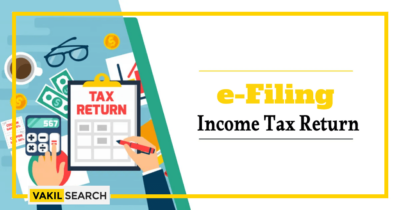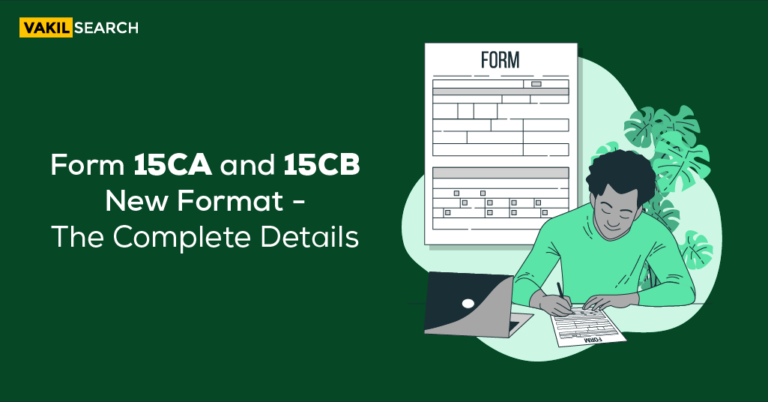Concerned about excess Tax Deduction at Source (TDS)? Unsure how much tax was deducted and how much you can claim as a refund? Let us examine Sections 197 and 197A in detail, and also how they are related to TDS.
| The Bombay High Court has recently set aside the respondent authority’s order rejecting the application of the petitioner for issuance of a TDS certificate. The petitioner filed an application in Form No.13 requesting respondent authority to issue a certificate for non-deduction of tax under section 197 of the Act on interest income received from M/s. Lakhani Builders Private Limited. The Court asked the respondent authority to decide on the issuance of a certificate under subsection (1) of section 197 of the Act for the assessment year 2020-21 on merit, within 6 weeks. |
What is TDS?
TDS or Tax Deducted at Source is a mechanism wherein any person/entity who is liable to pay salaries, commissions or interest on investments etc, is bound to deduct a certain percentage of income as tax before making such payments to the payee. This percentage of income that is deducted is called Tax Deducted at Source.
Purpose and Functioning of TDS
The TDS system has been introduced by the Income Tax department. It ensures that tax evasion by receipts of certain payments is curbed, by mandating advance tax payments to the government.
Let us look at how TDS functions
- TDS percentage ranges from 1% to 30%
- TDS from all your income sources for a financial year is consolidated in Form 26AS.
- Paying advance tax as TDS has its own drawbacks. While paying TDS may alleviate financial burdens for some taxpayers at the time of filing income tax, there may be others whose income does not even fall into the taxable bracket or whose tax liability is less than what they may have paid as TDS.
- For such taxpayers who end up paying over and above their tax liabilities in the form of TDS, a refund for the excess amount can be initiated and claimed.
Section 197 of the Income Tax Act
| Age | Interest Income | Deductions |
| Below 60 Years | ₹ 2.50 Lakhs | ₹ 1.50 Lakhs |
| 60 Years and above | ₹ 2.50 Lakhs | ₹ 1.50 Lakhs |
| ₹ 2.50 Lakhs | ₹1.50 Lakhs | |
| 80 Years and above | ₹ 4 Lakhs | ₹ 1.50 Lakhs |
To help situations where taxpayers have no tax liability at all or where the tax liability is lesser in terms of their current rate of TDS, the Income Tax Law provides for an option under Section 197 of the Act where the taxpayer by way of an application, can obtain a certificate from the Assessing Officer (AO) for either a Nil or a low rate of TDS.
Learn more about ITR filing
Who All Can Apply for Rebate under Section 197
Listed below is the category of individuals falling under the following sections of taxable income who can apply under Section 197:
Any individual earning income as specified in Section 192, 193, 194, 194A, 194C, 194D, 194G, 194H, Section 194-I, 194J, 194LA, 194LBB, 194LBC, 195 of the Income Tax Act such as income by way of salary, dividends, insurance commission, rent, etc. can apply for TDS exemption/lower rate.
Precision in every calculation – Tax Calculator India guarantees financial accuracy.
How to Claim Lower or Nil TDS
To claim lower/nil TDS, the assessee needs to file an application in Form 13 with the Income Tax/Assessing Officer. The following details are required to be furnished in this Form 13:
- Name and PAN of the taxpayer/assessee
- Reason/s for being eligible for the claim
- Details of the tax liability as per the existing income tax slabs
- The details of payment of tax: https://eportal.incometax.gov.in/iec/foservices/#/login for the last three years
- Details of the advanced tax paid
- Amount deducted/collected as TDS for the current assessment year
- The application is disposed of by the AO within 30 days.
- Upon being satisfied with the details furnished by the assessee, the AO issues a certificate that the deemed assessee can attach to the tax invoice to justify his claim for a lower tax deduction.
Details to Be Validated by the Deductor in the Certificate Issued by the AO
To be able to process the assessee’s request for Low/No TDS, the deductor needs to validate the following details in the certificate:
- PAN of the deductee as it is on the certificate
- Certificate number
- The validity of the certificate with reference to the relevant financial year
- Threshold limit on the certificate
Upon validation, the AO raises Flag A in the statement for issuing a certificate under Section 197 and Flag B for a certificate under Section 12A and 80G Registration
Points to Note:
The certificate once issued is valid for that particular financial year from the date of issue and will cease to be valid only in case the AO cancels the same.
Also, it is advisable to apply for the TDS relaxation at the beginning of the ongoing financial year even though there is no deadline for making the application under Section 197.
Section 197A
Section 197A provides for any individual, not being a firm or a company, to apply for an exemption of TDS deduction on their income from interest on deposits with the banks in India if such income is below the presumptive taxation
Deduction Under Section 197A
| Age | Interest Income | Deductions |
| Below 60 Years | ₹ 2.50 Lakhs | ₹ 1.50 Lakhs |
| 60 Years and above | ₹ 2.50 Lakhs | ₹ 1.50 Lakhs |
| ₹ 2.50 Lakhs | ₹1.50 Lakhs | |
| 80 Years and above | ₹ 4 Lakhs | ₹ 1.50 Lakhs |
Forms 15G and H
Individuals under the age of 60 can submit a declaration using Form 15G. Individuals over the age of 60 (senior citizens) must use Form 15H to apply. Furthermore, one is required to submit a declaration of TDS exemption on their interest income. These forms can also be used to request TDS exemption on EPF withdrawals, insurance commission earned rental income, corporate bonds, and post office deposits.
Get to know more, visiting us at Vakilsearch
Read more










